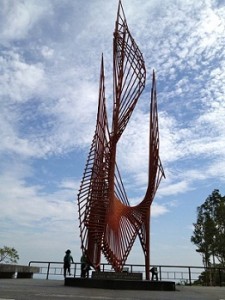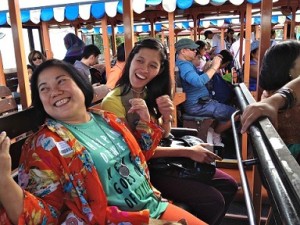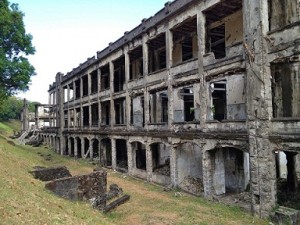Visitors who choose Corregidor as a summer destination this year will find many other reminders of its place in history from the time the Spaniards set it up as a correctional institution for prisoners doing hard labor to the time coastal inspectors or correctors were stationed there to check if ships entering Manila Bay had the proper papers all the way to this era when it has become a living museum.
Situated between Cavite and Bataan, the island, also known as the “The Rock”, because its rocky landscape, has often been mistaken as part of the latter province because its original name was Isla de Mariveles. It is actually part of Cavite.
With Sun Cruise tours in place and when the waters are not choppy and storm signals are not raised, Corregidor has more to offer than three decades ago.
Once tourists get off the wharf on the lowest level of the isle, also called Bottom Side, they can board the open-sided tranvia that sits 35 people inside. The fleet of tranvia, replica of the original trams, is a reminder that the island once had 13 miles of railway. The pseudo-trams are really mini-buses.

Tour guide Jose Baja runs through the entire history of Corregidor as the tranvia slowly makes its way to the highest site, sometimes called Swiss site, too, with some 10-15-minute pit stops along the way for picture-taking and a walk around some ruins like bombed-out craters that are cordoned off.
The Swiss site is where surviving Japanese soldiers who did not want to be caught by returning Americans near the end of World War II jumped to their deaths “in the way of the warriors,” Baja says.
Before the war, there were five communities of civilians living on the island in Barrio Lourdes, including Chinese-Filipinos who supplied the groceries. Today there are no permanent residents. Island employees and vendors go home to any of the nearby provinces or Metro Manila.
The American colonial masters spent $150 million to fortify the 900-hectare island whose mission then was to deny the enemy entry to Manila to the extent that their soldiers were required not to surrender.
The stops include Battery Way, a cannon that could then be fired in any direction and hit a target eight miles away. It was the last big gun to be fired before the Americans surrendered to the Japanese.
Baja says the silent Battery Hearn, named after a US corps commander, had a longer radius (17 miles). It was the most publicized at the time, the spot where Japanese soldiers posed and cried, “Banzai!” to show they had conquered the Philippines.
At the Top Side, the ruins of the mile-long barracks can be found. The parade grounds and golf course there was where 1,300 paratroopers landed to liberate the island although the Americans caused the most destruction during Liberation.

Baja says before the Japanese invasion, Cine Corregidor was “the best movie house in the Philippines.” The last movie shown, a foreboding of what was to come, was Gone with the Wind.
The white Pacific War Memorial that resembles a parachute commemorates soldiers who died in the battle for the island. The museum displays, among others, a Coke bottle, broken china, a mosaic of the war’s Pacific Ocean areas, money bills and coins from the American and Japanese periods, the first US flag hoisted on the island (that flag had only 45 stars), spent mortars, a soldier’s goggles.
Outside a towering sculpture in orange, an abstraction of the eternal flame, has these words carved on stone: “To live in freedom’s light is the right of mankind.”
Baja says Japan’s timetable of conquest was delayed because Filipinos put up a good fight. Six years ago, the widow of Lt. Norman Reyes, who read the announcement over the Voice of Freedom that “Bataan has fallen,” requested that her husband’s ashes be scattered in the lawn behind the flame.
The Filipino Heroes Memorial depicts revolts throughout Philippine history. It includes the statue of a Filipino peasant who is a guerrilla in disguise. The Spanish Museum recreates a tiny pueblo with 60 steps leading to a lighthouse. The Japanese Memorial, opened in 1991, perhaps a work in progress, has a traditional Oriental arch and a few display cases showing wartime Japanese bills and coins.
A must-stop is “The Malinta Experience,” billed as National Artist Lamberto Avellana’s “final tribute to valor, peace and international understanding.” The diorama of sound and light recreates how the tunnel was used as storage facility, then later served as subterranean shelter as the Japanese closed in.
Baja assures visitors that storied Corregidor does not harbor ghosts, adding, “They are all at peace.”--Elizabeth Lolarga
First published by Vera Files/Yahoo Philippines, April 3, 2012
Photos from top show: ruins of barracks, sculpture of eternal flame and tourists enjoying tranvia ride. All photos by MILA D. AGUILAR

2 comments:
philippines is rich in history to remember
health information services
What we need,' Henry says, 'is a fresh start. A blank slate. Let's call her Tabula Rasa. Cheap Flights to Bangkok
Post a Comment